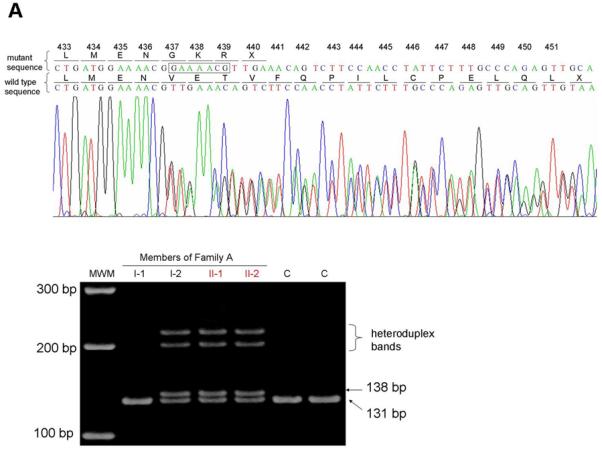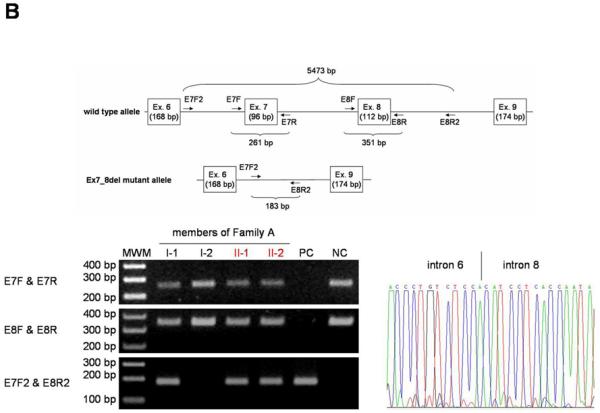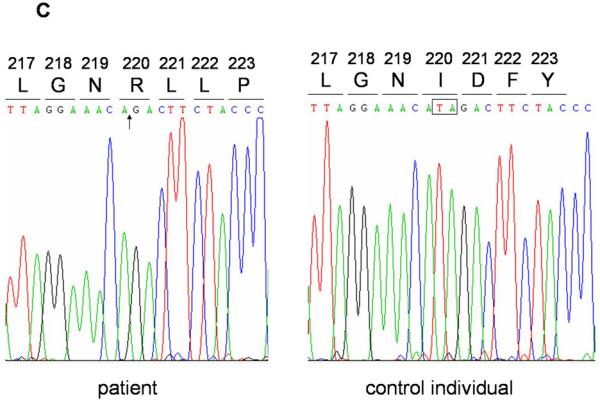Figure 2. Identification of mutations in the LIPH gene.



(a) Heterozygous mutation 1303_1309dupGAAAACG in the LIPH of Family A (top). The inserted nucleotides are boxed. Screening assay for the mutation 1303_1309dupGAAAACG (bottom) shows that the mutation was inherited from the mother (I-2) of the affected individuals (II-1 and II-2). C, control individuals. (b) Heterozygous mutation Ex7_8del in the LIPH of Family A. PCR with E7F2 and E8R2 primers amplified the 183 bp fragment from DNA of both affected individuals (II-1 and II-2) and their father (I-1) in Family A, as well as a Pakistani individual who is homozygous for the mutation Ex7_8del (PC), whereas this fragment was not amplified from DNA of either their mother (I-2) or a normal control individual (NC). Direct sequencing of this product clearly shows that Family A carries exactly the same deletion mutation Ex7_8del that was previously found in Pakistani families with ARWH. Note that the product from the wild type allele, 5473 bp in size, could not be amplified even from DNA of control individuals due to a short extension time of the PCR. Affected individuals are colored in red (a, b). MWM, molecular weight markers (a, b). (c) Homozygous mutation 659-660delTA in the LIPH gene of Family B. The position of the deletion is indicated by an arrow (left), and the deleted nucleotides are boxed (right).
